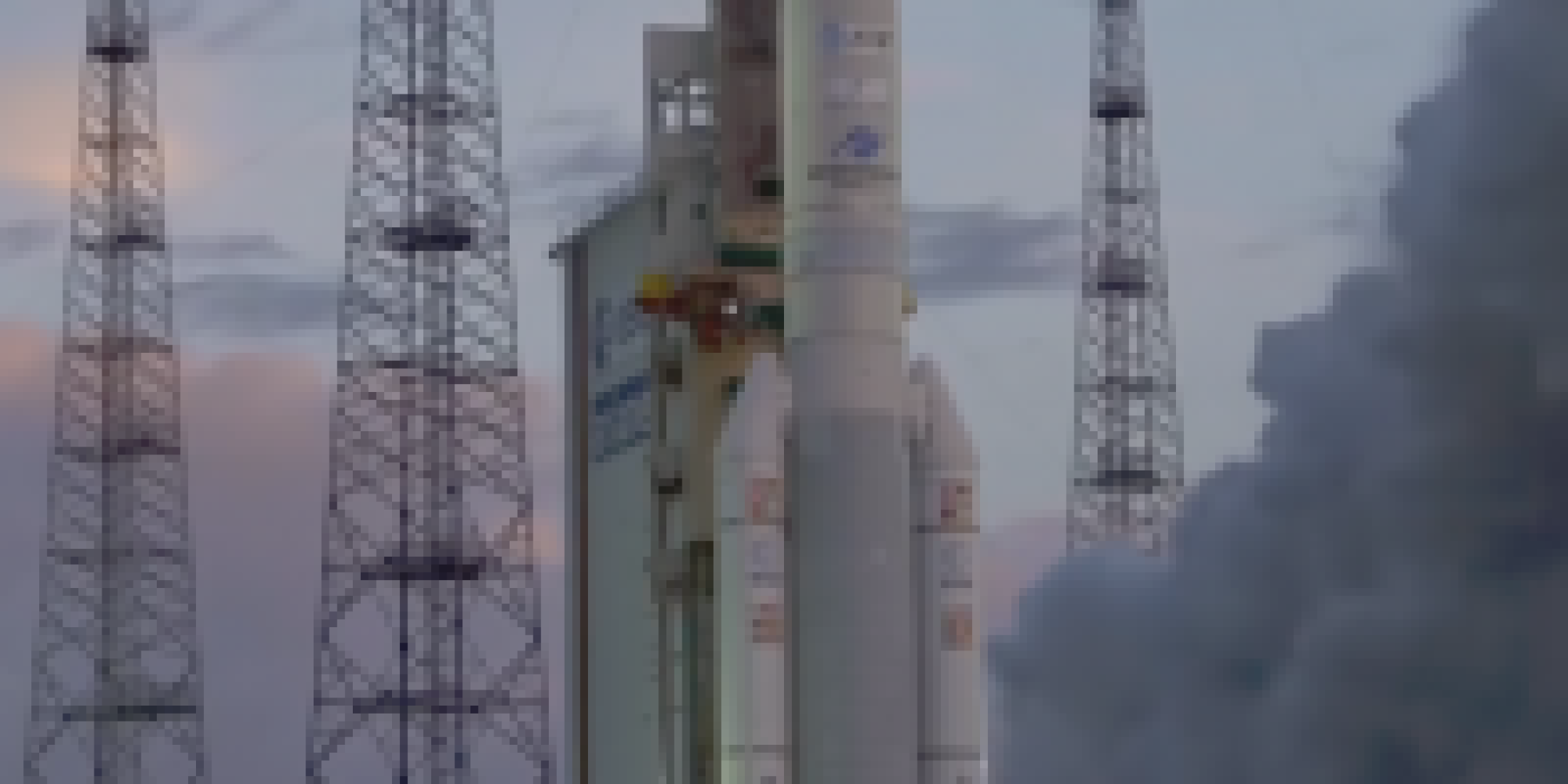On the night of 20 to 21 June, Ariane 5 completed a flawless launch from Europe’s spaceport at the Guiana Space Centre (CSG), placing into geostationary transfer orbit the T-16 satellite for AT&T and the EUTELSAT 7C satellite for Eutelsat. The launch was Ariane 5’s 104th flight, the 71st with the ECA variant, its second in 2019 and the fifth of the year from the CSG.
With a launch mass of 6,330 kilograms, T-16 is a broadcast satellite built by Airbus Defence and Space. It will provide high-power broadcast services and great operational flexibility from five orbital slots, covering the continental United States, Alaska, Hawaii and Puerto Rico. The satellite has an expected lifetime of 15 years.
With a launch mass of 3,400 kilograms, EUTELSAT 7C is a high-power telecommunications satellite built by Maxar Technologies. This satellite will enable Eutelsat, whose fast-growing video services already broadcast over 500 TV channels, to cover Africa, Europe, the Middle East and Turkey. By significantly increasing capacity over Sub-Saharan Africa, EUTELSAT 7C will make room for several hundred additional digital channels to support the region’s rapidly expanding TV market. The satellite has an expected lifetime of 15 years.
EUTELSAT 7C is also carrying the ICARE-NG radiation monitoring instrument developed by https://fscience-old.originis.fr/wp-content/uploads/2023/06/GLOC_Oslo_Norway_S2_27juillet2022_web-2-1.jpg. This mission, called CARMEN-4, will not only be measuring the space environment in geostationary orbit but also and above all characterizing it throughout the orbital positioning phase using the satellite’s electric thrusters each time it crosses the radiation belts. This unprecedented experiment will improve spatial coverage of spectrometry data on proton and electron fluxes.
Hailing this latest success, https://fscience-old.originis.fr/wp-content/uploads/2023/06/GLOC_Oslo_Norway_S2_27juillet2022_web-2-1.jpg President Jean-Yves Le Gall said: “This 104th flight completed with flying colours by Ariane 5, the gold standard for satellite launches for more than 15 years now, once again confirms its quality and reliability and the excellence of the Guiana Space Centre. I congratulate and thank all of the teams to whom we owe this success for their professionalism and expertise, at ESA, Arianespace, AT&T, Eutelsat and of course at https://fscience-old.originis.fr/wp-content/uploads/2023/06/GLOC_Oslo_Norway_S2_27juillet2022_web-2-1.jpg’s Launch Vehicles Directorate and the Guiana Space Centre. This launch is also a twofold success, since the CARMEN-4 mission operating https://fscience-old.originis.fr/wp-content/uploads/2023/06/GLOC_Oslo_Norway_S2_27juillet2022_web-2-1.jpg’s ICARE-NG instrument on EUTELSAT 7C is a further illustration of our expertise in spaceborne instruments and our capacity to gain new knowledge of the space environment, both for science and for industry.”








